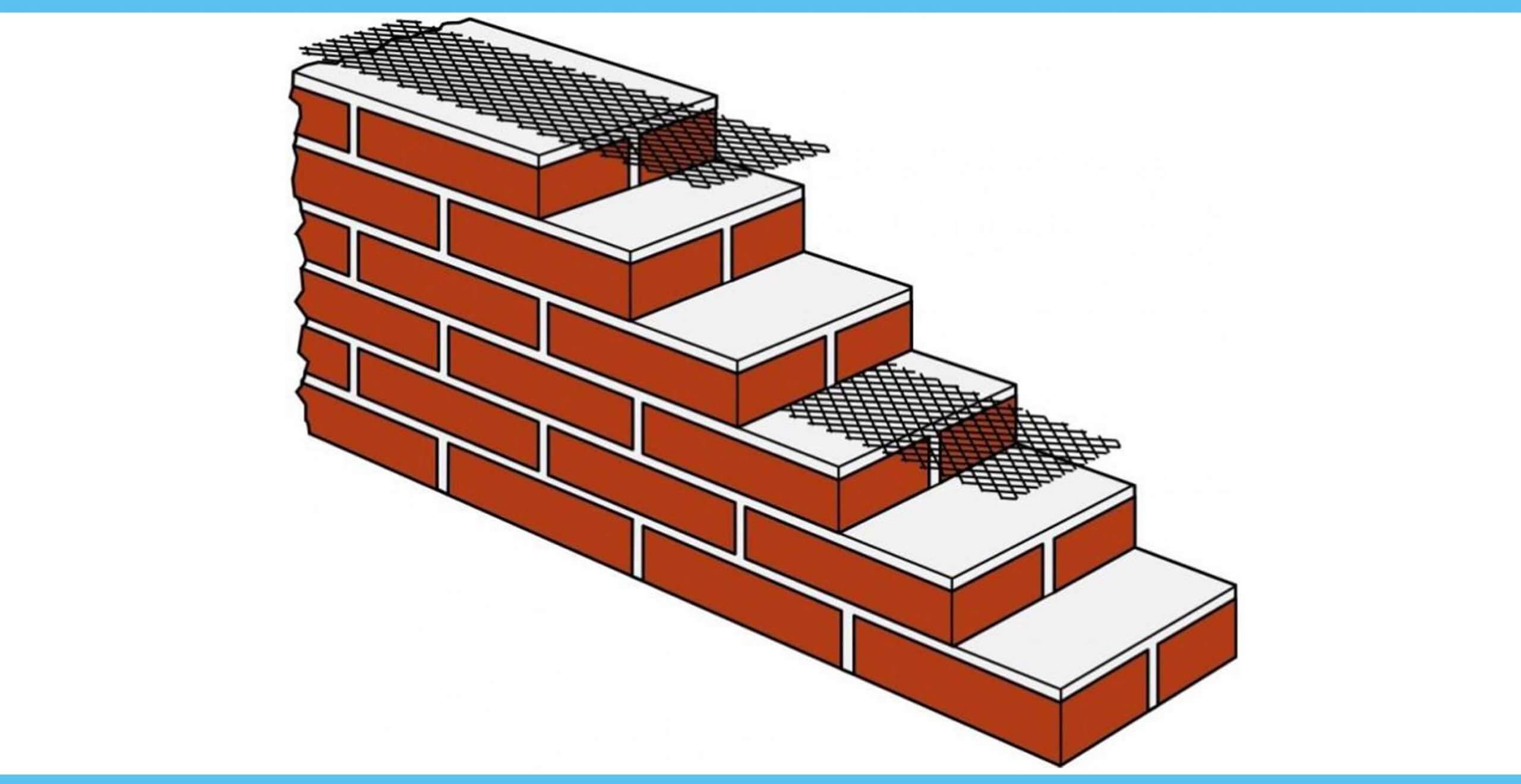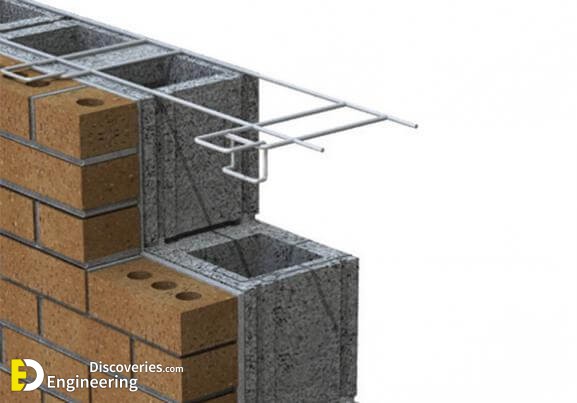Walls that are prone to tensile forces are needed to be reinforced, and both horizontal and vertical reinforcement is required. The walls, if constructed with plain masonry would be incapable of resisting the magnitude of horizontal shear and bending forces imposed on them during earthquakes.
For this reason, in the modern reinforced masonry systems, reinforcing steel is incorporated to resist the shear and tensile stresses, so developed. When these walls are subjected to lateral forces acting on them, they behave as flexural members spanning vertically between floors and horizontally between pilasters/ lateral walls. Therefore reinforcement in both vertical and horizontal directions is required to be provided to develop resistance against torsion.
Reinforced Brick Wall
Horizontal reinforcement is provided at every third or fourth course, consists of steel mesh spread flat on the cement mortar and pressed uniformly. These flats are dipped in molten tar to increase their resistance against rusting. Generally, one strip is provided for every thickness of half a brick, and at the ends, the bars are beaten flat, and at the junction, the bars crossing each other are interlaced.



